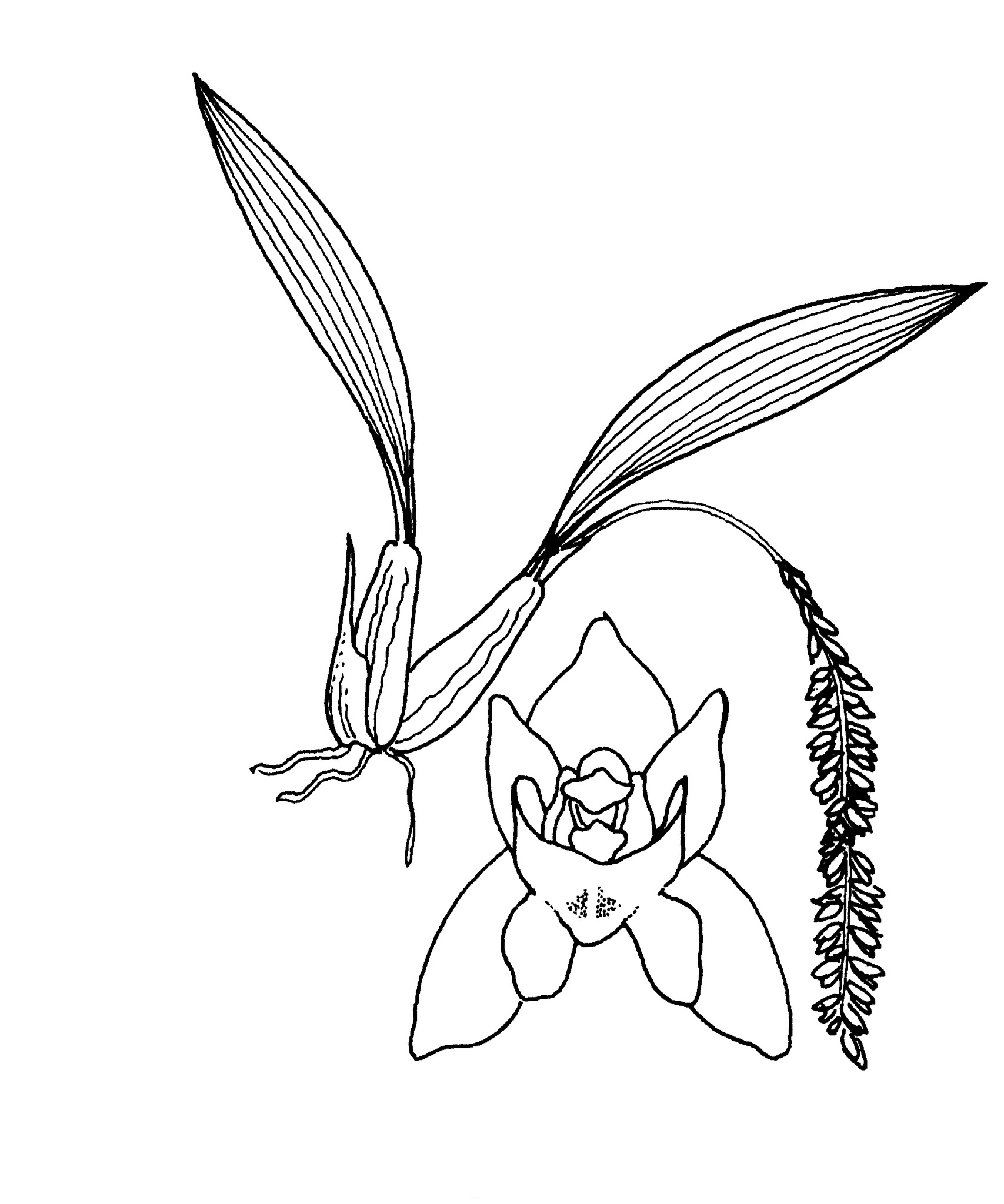
Greek pholis – scaly; otus − ear; an allusion either to the large ear-like bracts on the inflorescence or to the sheaths surrounding the pseudobulbs.
Epiphytic, epilithic or terrestrial herbs, sympodial, with creeping rhizomes. Stems thickened into cylindrical or conical pseudobulbs, often compressed, sparse or dense, smooth or ribbed, sheathed at base. Leaves apical, 1 or 2, linear to elliptic, thin to leathery, obscurely pleated, stalked. Inflorescences terminal racemes, erect at base then pendent, spiral or zig-zagged, with prominent overlapping papery bracts. Flowers resupinate or non-resupinate, many, small, congested in 2 ranks, white to brownish. Sepals similar, usually free, laterals often keeled. Petals similar to sepals or narrower, free. Labellum more or less entire to 3-lobed, base pouched, side lobes erect beside column, midlobe entire or 2- lobed and curved under. Column short, winged at tip. Pollinia 4, free or in pairs.
About 30 species from India, China, SE Asia, Indonesia, New Guinea and Australia.
Small white to brown flowers in dense racemes, each flower subtended by a prominent papery bract.
de Vogel (1988).
Source: (2005). Orchidaceae. In: . Horticultural Flora of South-eastern Australia. Volume 5. Flowering plants. Monocotyledons. The identification of garden and cultivated plants. University of New South Wales Press.
